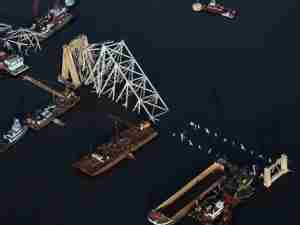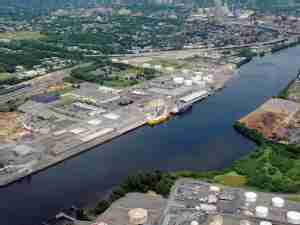The Maryland Department of Transportation Maryland Port Administration (MDOT MPA) project to use dredged material to restore a pair of vanishing islands off the coast of Dorchester County received a major boost this week with allocation of $37.5 million in the U.S. Army Corps of Engineers (USACE) Supplemental FY 2022 Workplan. The funding guarantees construction of the Mid-Chesapeake Bay Island Ecosystem Restoration project, which will restore island habitat at James and Barren islands and help protect the Dorchester County shoreline from erosion, will begin in September 2022. The island sites will eventually replace Poplar Island in Talbot County as the state’s primary receiving site for bay channel dredged sediment.
“Dredging is an ongoing necessity for Maryland’s Port of Baltimore to accommodate the huge ships that deliver cargo, keep our supply chain open and grow our economy,” said Governor Larry Hogan. “With support from Maryland’s congressional delegation and partnership with the U.S. Army Corps of Engineers, this allocation will put sediment from our shipping channels to work restoring long-eroded Chesapeake Bay islands.”
The water resources investment is a part of $14 billion released to the USACE Wednesday, largely stemming from supplemental funding in the Infrastructure Investment and Jobs Act intended to fund civil works studies and projects. The workplan also includes $2.1 million for dredging and surveys at Herring Bay and Rockhold Creek in Anne Arundel County; $2.4 million for dredging and surveys for Northeast River in Cecil County; and $50,000 for engineer surveys for Slaughter Creek in Dorchester County.
The Mid-Chesapeake Bay Island project will restore remote island habitat around two rapidly eroding barrier islands – James and Barren – creating new wildlife habitat and providing much-needed shoreline protection for Dorchester County.
The larger of the two, James Island, will have 2,072 acres restored, with 55% preserved as wetlands habitat and 45% as upland habitat. At Barren Island, 72 acres will be restored as wetlands and the project will also include the installation of breakwaters to protect island remnants and adjacent seagrass beds.
“The use of dredged material to rebuild islands and create wildlife habitat shows that our team at the Port is focused not only on growing Maryland’s economy, but also maintaining an outstanding level of environmental stewardship,” said MDOT Secretary James F. Ports, Jr. “The Mid-Chesapeake Bay Island Ecosystem Restoration is the latest example of our tremendous partnership with the U.S. Army Corps of Engineers. At James and Barren islands, this project will encourage wildlife, protect shorelines and restore a piece of the Chesapeake Bay’s natural beauty.”
Restoration around Barren Island will commence first – with construction beginning in September based on the USACE allocation. James Island construction is anticipated in 2024. Barren will accept sediment from nearby shallow-draft channels. James Island will accommodate an estimated 90 million to 95 million cubic yards of dredged sediment, providing at least 30 years of capacity. USACE will turn the project over to the state when the habitat development is complete.
Anticipated benefits from the project include:
• Protection of 1,300 acres of seagrass beds from construction of stone sills and breakwaters surrounding Barren Island – which also will attract more fish, crabs and oysters;
• Rebuilding 130 acres of wetlands, forest, and beach habitat protection;
• Creation of two new bird nesting locations adding 8.5 acres of scare habitat for rare bird species;
• Restoration of 72 acres of remote island habitat supporting diverse wildlife including Diamondback Terrapins and Common Terns; and
• Enhancement of boating, fishing, and wildlife observation experiences.
The Mid-Bay project will ultimately replace the Paul S. Sarbanes Poplar Island Environmental Restoration Project, which has been Maryland’s primary site for reuse of sediment dredged from Port of Baltimore shipping channels. Construction for Poplar’s final expansion, which added four new wetland cells and one upland cell, was completed last year. The expansion added 575 acres and capacity for 28 million cubic yards of material. Poplar will continue receiving dredged sediment until 2032 when Mid-Bay will begin receiving that sediment.
“I can’t say enough about the incredible working relationship we have with the Army Corps of Engineers led by Lt. General Scott Spellmon, Chief of Engineers and Commanding General and Col. Estee Pinchasin, Commander of the Corps Baltimore District,” said MDOT MPA Executive Director William P. Doyle. “Next week we will welcome Michael Connor, the assistant secretary of the Army Civil Works, for his first visit to a U.S. port since he was confirmed…an incredible honor for the Port of Baltimore. Maryland is an international leader in the beneficial use of dredged material for coastal and island restoration. We are thinking ahead and planning for anticipated climate changes by strengthening our barrier islands.”









